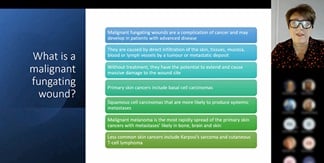Open wounds with an exposed tendon situated on the lower leg present a significant challenge to the clinician in order that they may treat and obtain a positive healing outcome. Of great importance is that the location of the wound will impede mobility of the tendon and may well lead to chronic inflammation that in turn hinders wound closure. Tendons are nourished by blood vessels and diffusion of nutrients from synovial fluid, exposure of this structure to air will cause desiccation and subsequent tissue necrosis and infection (Geiger et al., 2016). These types of wounds therefore require a treatment regimen that will promote the development of granulation tissue and ultimately enable reepithelialisation and coverage of the exposed tendon as rapidly as possible.
Case description
Open wounds with an exposed tendon situated on the lower leg present a significant challenge to the clinician in order that they may treat and obtain a positive healing outcome. Of great importance is that the location of the wound will impede mobility of the tendon and may well lead to chronic inflammation that in turn hinders wound closure. Tendons are nourished by blood vessels and diffusion of nutrients from synovial fluid, exposure of this structure to air will cause desiccation and subsequent tissue necrosis and infection (Geiger et al., 2016). These types of wounds therefore require a treatment regimen that will promote the development of granulation tissue and ultimately enable reepithelialisation and coverage of the exposed tendon as rapidly as possible.
Discussion/Conclusion
HydroTac® provided a combination of absorption and moisture donation, thus dessication and necrosis damage to tendons was prevented and the wound bed was kept in a balanced, moist environment enabling optimisation of healing whilst reduding pain and increasing patient compliance.
Clinical relevance
HydroTac® provided a very effective way of treating a severe and painful chronic wound with an exposed tendon to the forefoot:
Conflict of Interest
Supported by Hartmann
References
Geiger SE, Deigni OA, Watson JT, Kraemer BA. Management of Open Distal Lower Extremity Wounds With Exposed Tendons Using Porcine Urinary Bladder Matrix. Wounds. 2016 Sep;28(9):306-316. water and low molecular weight substances. Proteins enter the polymers much slower so that their concentration increases relatively in the outside fluid compartment. We looked at HGF found a 3-fold increase in relative concentration which favored faster epithelialization in scratch assays. In a pig study, split thickness donor sites had faster epithelial tongue migration with these hydrated polyurethanes compared with silicone interface dressings.
